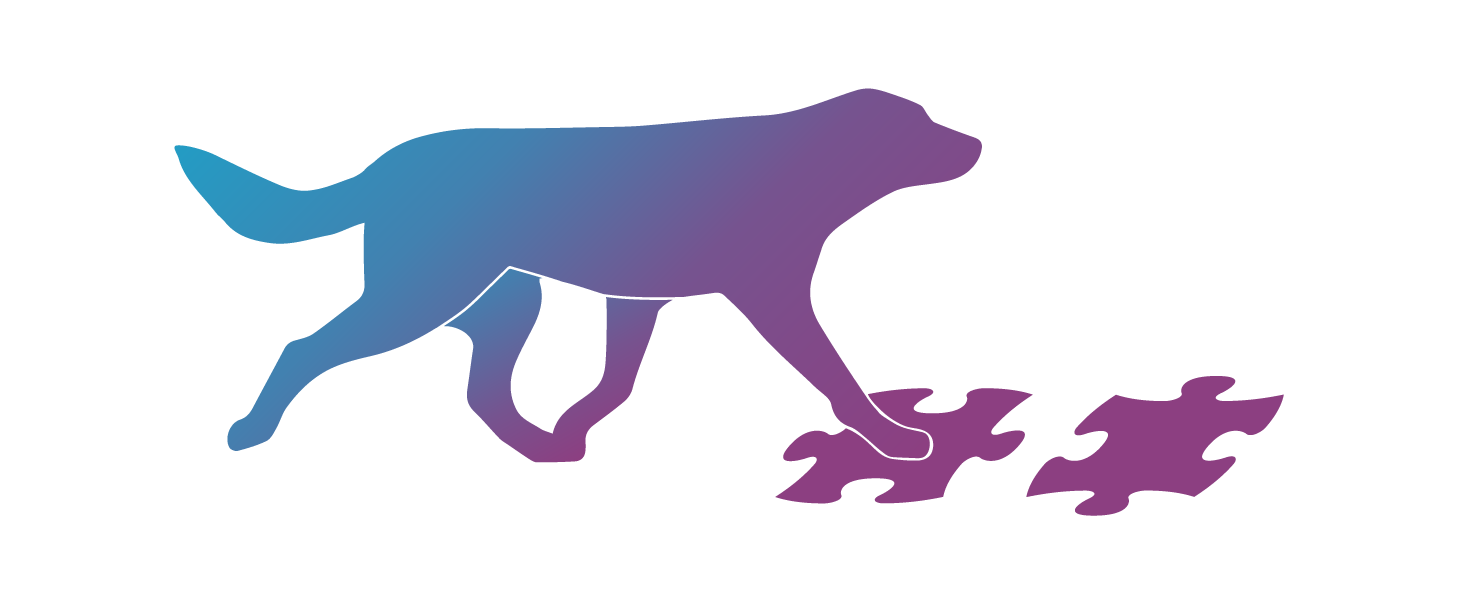As a dog agility enthusiast you probably already know that teaching your dog to run on the dog walk can take a while. Isn’t it a well known belief that training running contacts needs lots of repetitions?!
And it quickly becomes even more challenging and time consuming with dogs who are reckless, who misplace their paws off to the side, lose balance and even fall during the training sessions.
While we may see success stories like “Amazing! She got a competition ready running dog walk in just 2 months!” on social media, we rarely see the stories of dogs who are actually struggling with running on the dog walk. Yet they are out there. And if you are reading this, chances are that you also know of a dog (and maybe it’s your own dog) who tends to have a worrying amount of dog walk incidents…
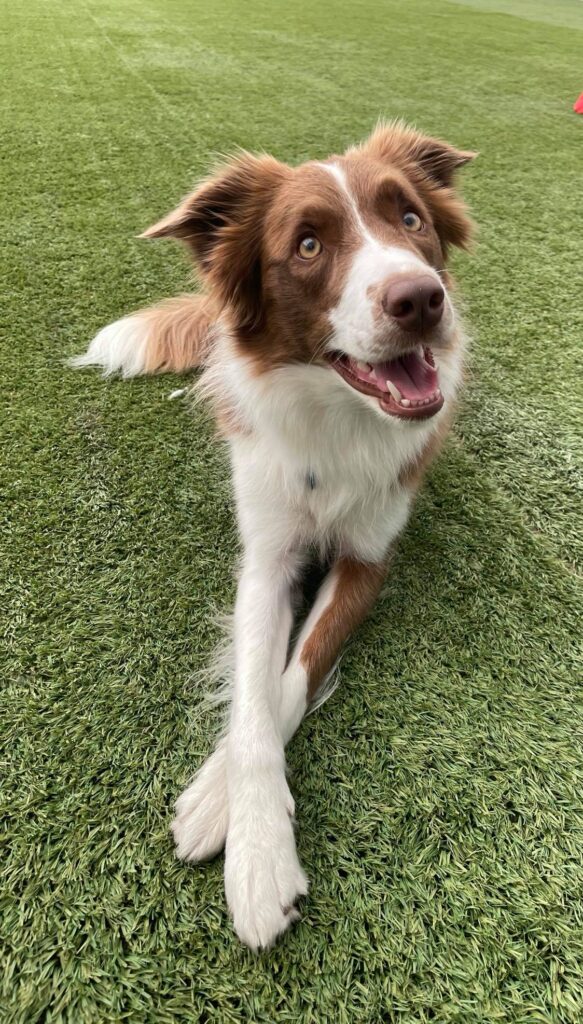
Zirka was also one of these dogs. A reckless, “ride or die” Border Collie, who wants to do things fast without any regard to her own safety. She and her human Rita attended my in-person canine fitness classes.
During one of the classes Rita told me about the problem she was having with dog walk training. Zirka had no problem hitting the target mat. But as soon as they moved the target exercise to a low plank, it was clear that they were going to have problems: Zirka was super focused on hitting the target mat and the plank was just something in her way to get to the target.
When they started training on the low dog walk, Zirka would often step off to the side with one or more paws. Rita received the popular advice of just pushing through and waiting for the incidents to “teach” Zirka how to stay on the dog walk.
But after Zirka’s first real fall from the dog walk, Rita came to me, asking for advice. Because she was rightfully worried that Zirka will eventually injure herself by being reckless and falling off the dog walk.
And we solved it.
We quickly got Zirka running the dog walk with precision without any more accidents. But before I tell you “How?”, we’ll first have to look at why Zirka – and so many other dogs – have this problem in the first place.
One of the big problems with the dog walk training trends is that the main focus is on hitting the contact zone. And it’s understandable – hitting the contact zone IS the main criteria of dog walk performance.
But – here’s a question for you – what’s the use of hitting the contact zone if your dog doesn’t know how to get to the contact zone safely?
The usual dog walk training setup at the starting level is using a low plank and a target mat at the end. In this training setup, it’s a good practice to reinforce all the good hits of the target, no matter what happens before the target.
If your dog runs on a low plank, misplaces a paw off to the side, but then gets back on the plank and hits the target perfectly – you’d reinforce that, right? As a result, your dog won’t know that keeping paws on the plank is actually also part of the criteria.
And that’s where dogs run into trouble – they learn the most reinforced criteria for the dog walk, that’s hitting the contact zone… Without any idea that there are other criteria like keeping all 4 paws on the dog walk. And keeping all 4 paws on with increasing challenges like speed, different entry angles, handler mistakes.
Basically, we are talking about lumping here – teaching only one criteria of the exercise – hitting the contact zone – while expecting the dog to figure everything else out – keeping the paws on – on her own.
So, how is your dog supposed to learn to keep paws on the dog walk surface and maintain balance, no matter what?
Some dogs just learn it from experience. Most likely they do misplace a paw off to the side, find out that it’s not a nice sensation – it’s like you missing a step on the stairs and losing balance, not a nice experience at all! Misplacing a paw is uncomfortable, so they learn to keep the paws on the plank instead.
Essentially that’s learning through punishment – misplacing a paw results in an unpleasant experience and the learner then avoids misplacing a paw. Situations like that happen all the time in real life, so if your dog learns this quickly then I guess there’s no great harm done.
But not all dogs learn this quickly. And many dogs – the ones who get into trouble on the dog walk – actually don’t know how to avoid misplacing paws (and yes, some are so reckless that they don’t care about misplacing paws, but the reason of misplacing paws is still the same).
Your dog can only avoid misplacing paws if he knows how to do that! But dogs like Zirka just keep on misplacing paws, resulting in falls, because they don’t know how to avoid it and their goal is to hit the target area, no matter what, just like they were taught.
And that’s exactly what we taught Zirka – how to keep her paws on a narrow surface while running.
We took the target mat completely out of the equation and focused on Zirka’s skills to move safely on a narrow surface like the dog walk, and keeping all 4 paws on the dog walk surface while running.
While it may sound like an easy behavior, it really isn’t.
In order to achieve a reliable and safe dog walk performance, we had to focus on teaching Zirka 3 core skills of staying on the dog walk – all away from the actual dog walk:
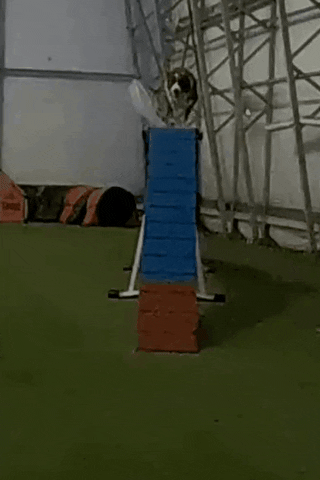
- Knowing exactly where all her paws are at any given moment and how much space she has to place her feet on the dog walk without stepping off to the side. Even during challenging situations, pushing dogs close to the edge of the dog walk – like a turn right before or after a dog walk!
Look how close Zirka gets to the edge when preparing for a turn. Now she’s doing it safely – she knows exactly how much space she has and where to place her paws!
- Balancing on a narrow surface while running. Because keeping the paws on the dog walk isn’t going to help if your dog doesn’t know how to control his center of gravity and keep it right above the dog walk. That’s what balance training with movement helps to achieve – stabilizing the body to run in a straight line, no matter the entry angle, speed or handler movement.
- Controlling and coordinating the movements to adjust the gait while running on a narrow surface. So that Zirka could easily adjust the gait while running on the dog walk to hit the contact zone without losing balance or misplacing a paw.
Zirka hasn’t had a single dog walk incident since we worked on her narrow surface skills. That’s now 1.5 years without accidents and worry. Rita knows Zirka can easily and safely nail the dog walk even if the conditions aren’t perfect.
Here’s what Rita herself says about the problems she was having with the dog walk training and the results we got:
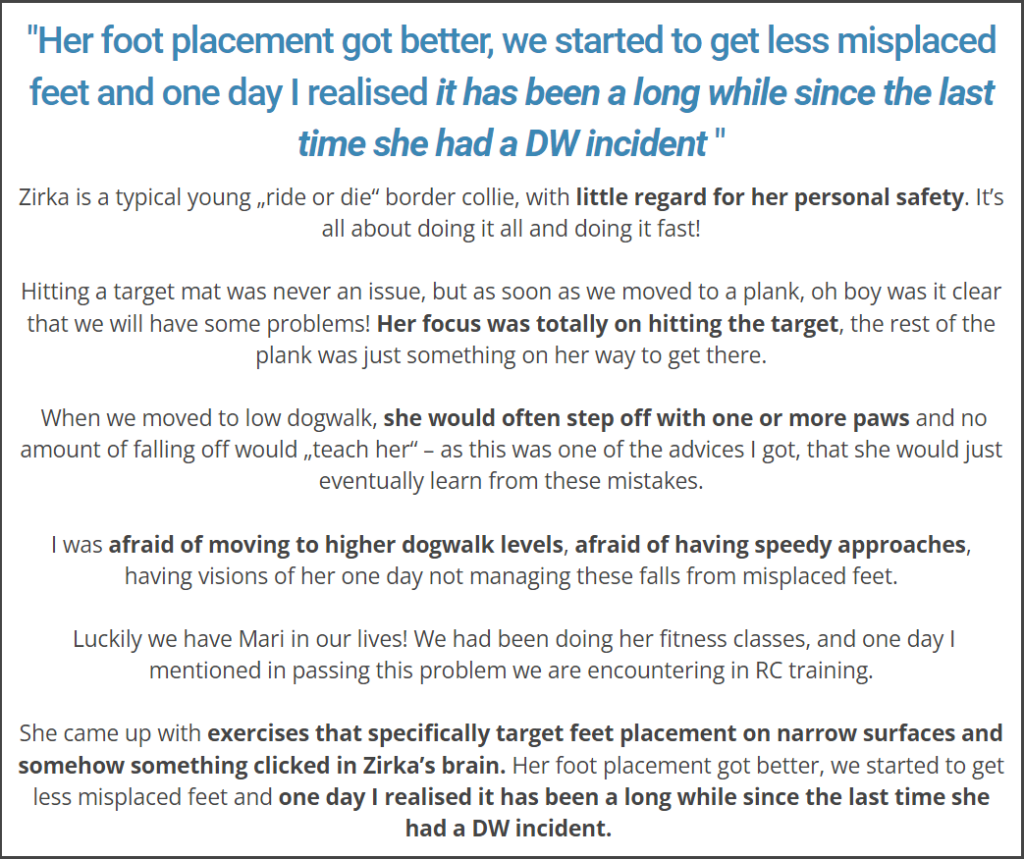
What if we hadn’t done these exercises with Zirka?
Well, maybe she would’ve learned to stay on the dog walk eventually through all the repetitions and accidents. But that would’ve put her in constant risk of breaking toes or even ending with a spinal injury from a bad fall.
And her dog walk training process would’ve taken a lot longer than it did – because Zirka would’ve needed more repetitions on the actual dog walk to learn how to run without misplacing paws.
So, if you really want to train the dog walk faster and make it safer for your dog, make sure he actually knows how to run on a narrow surface!
Do you want the same results as we got for Rita & Zirka?
The exercises we did with Zirka together with my 5 year experience as a canine fitness trainer are packed into my step-by-step online course Beyond Dog Sports: Dog Walk. Now tested by more than 100 dogs and their handlers, who enjoy the exercises and notice significant improvements in their dog’s body awareness, balance and safety on the dog walk.
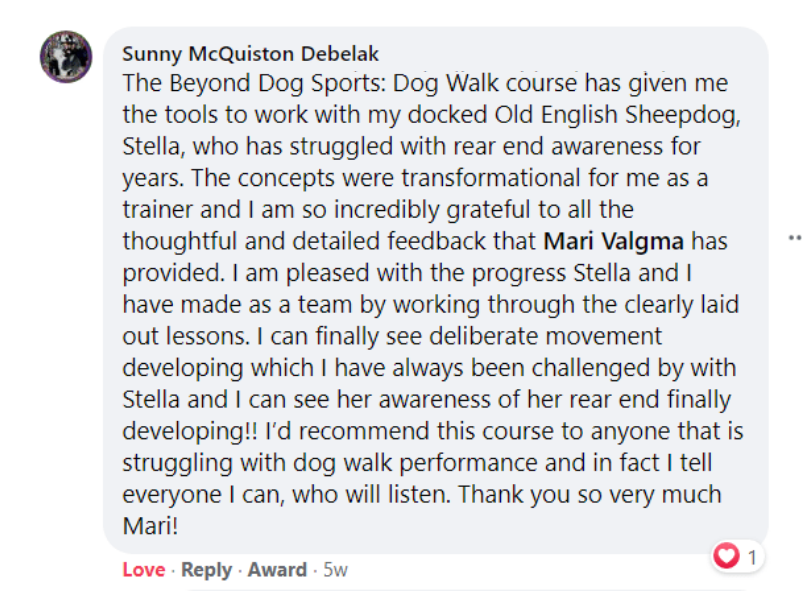
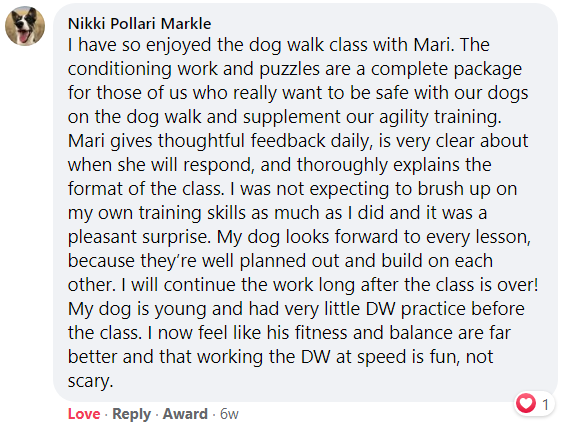
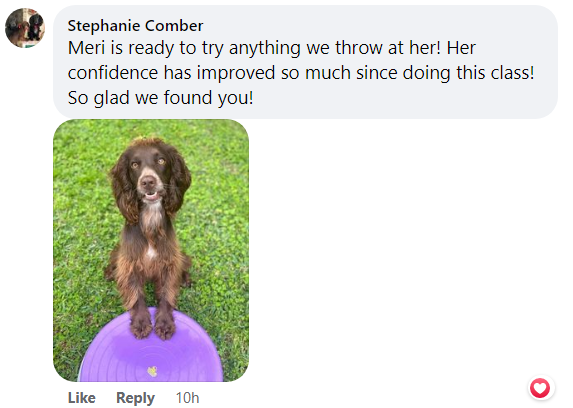
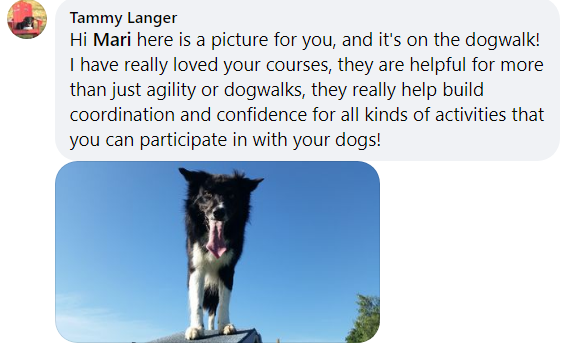
If you want the same results as we got with Rita and Zirka then now is the perfect opportunity! Beyond Dog Sports: Dog Walk is currently open for enrollment. Click here for more information and registration: themovingcanine.com/dogwalk
There’s currently no deadline for enrollment, but the price for this course is going up soon – so better grab this opportunity now 😉
I’d love to help you make the dog walk safer for your dog!
Mari Valgma, CPCFT

